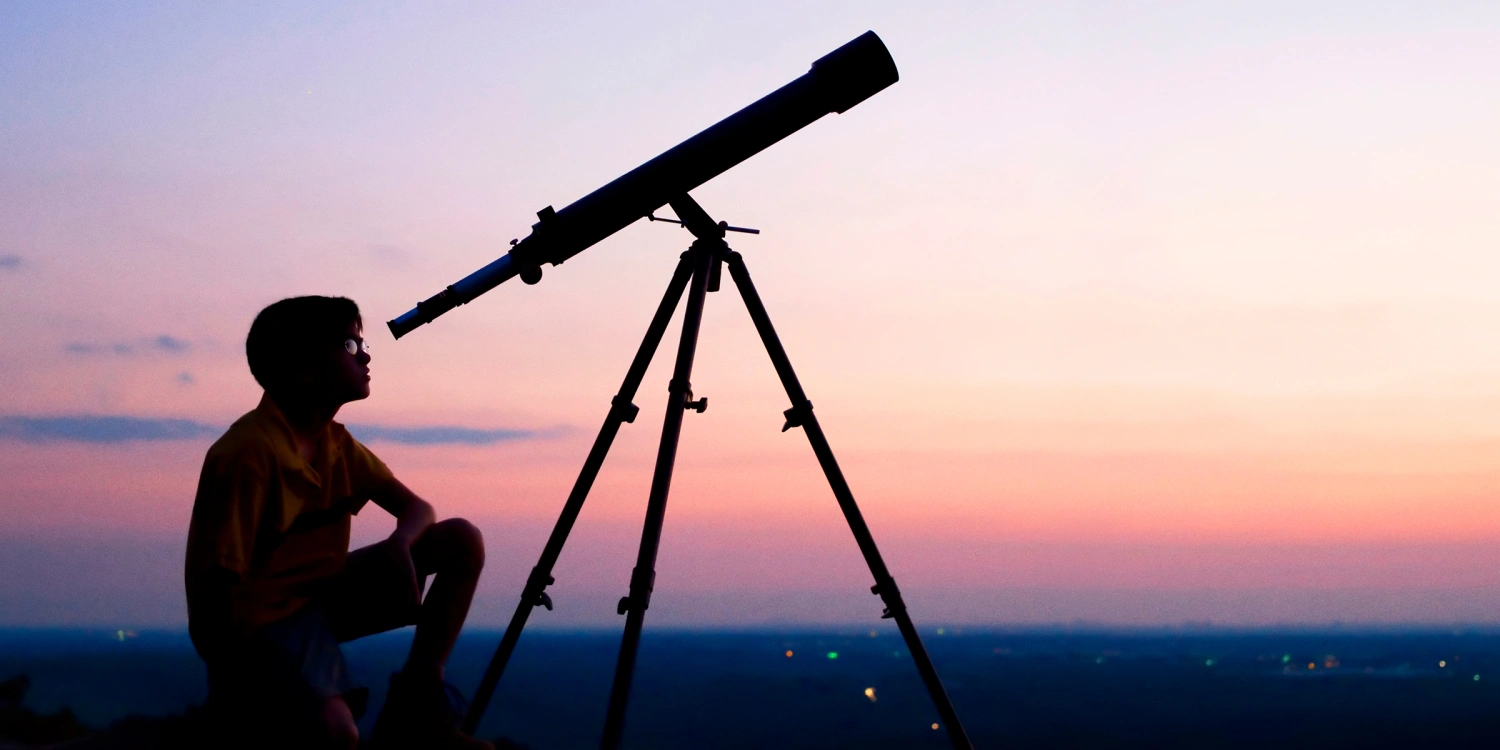
Telescopes have always fascinated humanity with their ability to unlock the secrets of the universe. These incredible inventions allow us to peer into the depths of space, revealing the wonders and mysteries that lie beyond our reach. From ancient civilizations and their rudimentary telescopes to the advanced and sophisticated instruments we have today, telescopes have come a long way in helping us understand our place in the cosmos.
In this article, we will explore 18 mind-blowing facts about telescopes that will leave you in awe of their power and significance. Whether you are a space enthusiast, an aspiring astronomer, or simply someone curious about the universe, these facts will take you on a journey through the history, technology, and discoveries made possible by telescopes.
Key Takeaways:
- Telescopes have revolutionized our understanding of the universe, allowing us to see invisible celestial objects and capture breathtaking images with incredible clarity.
- From detecting exoplanets to mapping cosmic background radiation, telescopes continue to push the boundaries of exploration and unravel the mysteries of the cosmos.
The first recorded use of telescopes was in the early 17th century.
During the 17th century, innovative astronomers such as Galileo Galilei and Johannes Kepler began using telescopes to observe celestial objects, revolutionizing our understanding of the universe.
Telescopes can be used to detect invisible celestial objects.
With the help of specialized instruments, telescopes can detect various forms of radiation, including infrared, ultraviolet, and X-rays, allowing us to observe objects that are otherwise invisible to the naked eye.
The Hubble Space Telescope can capture images with incredible clarity.
Launched in 1990, the Hubble Space Telescope has provided breathtaking images of distant galaxies, nebulae, and other celestial phenomena, thanks to its advanced optics and location above Earth’s atmosphere.
Radio telescopes can detect signals from outer space.
Radio telescopes are designed to capture and analyze radio waves emitted by celestial objects, providing valuable insights into the composition, movement, and behavior of stars and galaxies.
The largest optical telescope in the world is the Gran Telescopio Canarias.
Located on the island of La Palma in Spain, the Gran Telescopio Canarias boasts a primary mirror with a diameter of 10.4 meters, allowing for incredibly detailed observations of the universe.
The James Webb Space Telescope is set to be the most powerful telescope ever launched.
Due to be launched in 2021, the James Webb Space Telescope (JWST) will surpass the capabilities of the Hubble Space Telescope. It will enable astronomers to study the early universe, the formation of galaxies, and the evolution of stars and planetary systems.
Telescopes played a crucial role in the discovery of exoplanets.
By observing the slight dimming of a star’s light as a planet passes in front of it, astronomers using telescopes have been able to identify and confirm the existence of thousands of exoplanets beyond our solar system.
The Very Large Array in New Mexico consists of 27 radio telescopes working together.
This array of radio telescopes, located in the desert of New Mexico, collaboratively collects and combines radio signals, creating a virtual telescope with a resolution comparable to that of a single telescope with a diameter of nearly 36 kilometers.
The largest reflecting telescope on Earth is the Gran Telescopio Canarias.
With its impressive size and advanced mirror technology, the Gran Telescopio Canarias allows astronomers to capture detailed images of distant celestial objects and explore the mysteries of the universe.
The Arecibo Observatory in Puerto Rico has the largest single-dish radio telescope.
With a diameter of 305 meters, the Arecibo Observatory’s radio telescope provides scientists with a powerful tool for studying pulsars, conducting radio astronomy, and even searching for extraterrestrial intelligence.
The largest space-based X-ray telescope is the Chandra X-ray Observatory.
Launched in 1999, the Chandra X-ray Observatory detects and images X-ray emissions from cosmic sources such as black holes, supernovas, and high-temperature gas clouds, aiding our understanding of these energetic phenomena.
The Kepler Space Telescope discovered thousands of exoplanets.
Launched in 2009, the Kepler Space Telescope used the transit method to detect planets by measuring the slight dips in brightness when a planet crosses in front of its host star.
The world’s largest fully steerable radio telescope is the Robert C. Byrd Green Bank Telescope.
Located in West Virginia, USA, the Green Bank Telescope measures 100 meters in diameter and allows astronomers to conduct high-resolution observations of distant galaxies, pulsars, and hydrogen gas clouds.
The Very Large Telescope in Chile has several auxiliary telescopes to enhance its capabilities.
The Very Large Telescope (VLT) consists of four individual telescopes and four auxiliary telescopes, all working together to provide astronomers with detailed images and spectra of astronomical objects, even at great distances.
The Planck space observatory mapped the cosmic microwave background radiation.
Planck, a European Space Agency mission, precisely measured the cosmic microwave background radiation, which provides valuable information about the early universe, including its age, composition, and evolution.
The Keck Observatory in Hawaii has the largest optical and infrared telescopes.
The twin telescopes at the W. M. Keck Observatory are a marvel of engineering, with each telescope boasting a primary mirror measuring 10 meters in diameter. They enable astronomers to study distant galaxies, exoplanets, and the dynamics of stars.
The largest fully steerable radio telescope is the Effelsberg Telescope in Germany.
The Effelsberg Radio Telescope, located near Bonn, Germany, has a dish diameter of 100 meters, allowing for precise observations of radio emissions from celestial sources, including pulsars, galaxies, and quasars.
The Giant Magellan Telescope is currently under construction.
When completed, the Giant Magellan Telescope (GMT) will comprise seven individual mirrors, each 8.4 meters in diameter, working together to create one of the most powerful telescopes on Earth. It will offer unprecedented views of the universe and enable scientists to peer deeper into space than ever before.
These 18 mind-blowing facts about telescopes showcase the incredible technological advancements and discoveries made in the field of astronomy. As our understanding of the universe expands, telescopes continue to push the boundaries of exploration and unravel the mysteries of the cosmos. So next time you gaze up at the night sky, remember the remarkable feats accomplished by these incredible instruments.
Conclusion
In conclusion, telescopes are truly fascinating instruments that have revolutionized our understanding of the universe. From their humble beginnings to the high-tech devices we have today, telescopes have played a significant role in expanding our knowledge and unveiling the wonders of space. Their ability to capture distant light, reveal celestial phenomena, and explore galaxies far beyond our reach is truly mind-blowing.Whether you’re an astronomy enthusiast or simply curious about the mysteries of the cosmos, learning about telescopes will undoubtedly leave you in awe. So take the time to appreciate these incredible instruments and continue to explore the universe with wonder and curiosity.
FAQs
Q: What is a telescope?
A: A telescope is an optical instrument that gathers and focuses light, enabling us to observe distant objects in the night sky.Q: Are all telescopes the same?
A: No, there are different types of telescopes with varying designs, such as refracting telescopes, reflecting telescopes, and compound telescopes.Q: How do telescopes work?
A: Telescopes work by collecting and focusing light through a combination of lenses or mirrors, which magnify the image and make it visible to the viewer.Q: Can telescopes only be used for stargazing?
A: While telescopes are commonly used for astronomy, they can also be used for terrestrial viewing, birdwatching, and even for capturing stunning photographs of landscapes or wildlife.Q: Are telescopes only used by professional astronomers?
A: No, telescopes are also widely used by amateur astronomers, hobbyists, and educational institutions for observing celestial objects and conducting scientific experiments.Q: Can I use a telescope to see planets?
A: Yes, telescopes are excellent tools for observing planets. Depending on the telescope’s capabilities, you can witness the details of the planets, such as their moons, rings, and surface features.Q: Can telescopes see beyond our solar system?
A: Yes, powerful telescopes like the Hubble Space Telescope can capture images of galaxies, nebulae, and other celestial objects located millions of light-years away from Earth.Q: How much does a telescope cost?
A: The cost of telescopes can vary greatly, ranging from affordable beginner models to high-end professional telescopes, with prices ranging from hundreds to thousands of dollars.Q: Is telescope maintenance required?
A: Yes, regular maintenance is necessary for telescopes to ensure their optimal performance. Cleaning lenses, aligning mirrors, and protecting the telescope from dust and moisture are essential maintenance tasks.Q: Can I use a telescope in the city or do I need to be in a remote area?
A: Telescopes can be used in both urban and remote areas. However, light pollution in cities may hinder the quality of observations, so it is recommended to find darker spots for better stargazing experiences.
Was this page helpful?
Our commitment to delivering trustworthy and engaging content is at the heart of what we do. Each fact on our site is contributed by real users like you, bringing a wealth of diverse insights and information. To ensure the highest standards of accuracy and reliability, our dedicated editors meticulously review each submission. This process guarantees that the facts we share are not only fascinating but also credible. Trust in our commitment to quality and authenticity as you explore and learn with us.


